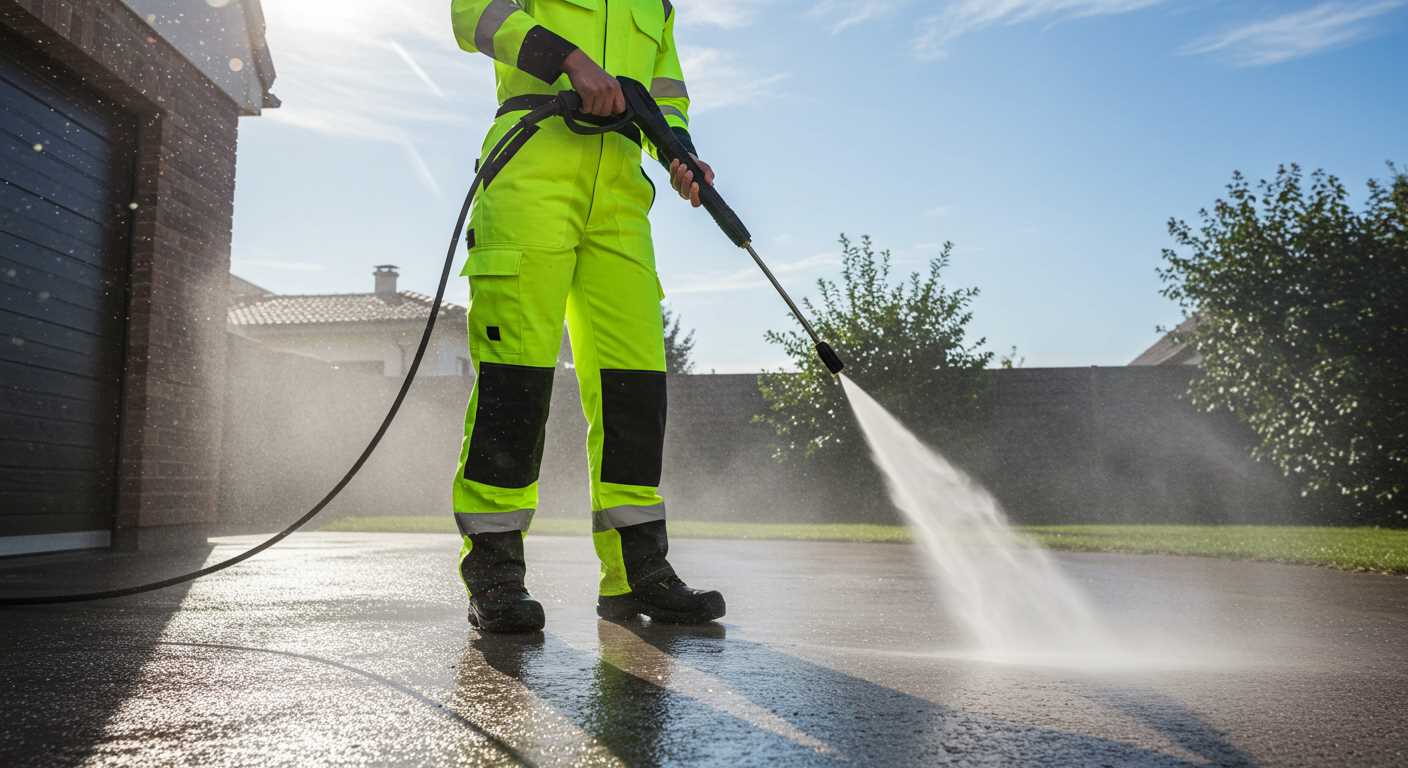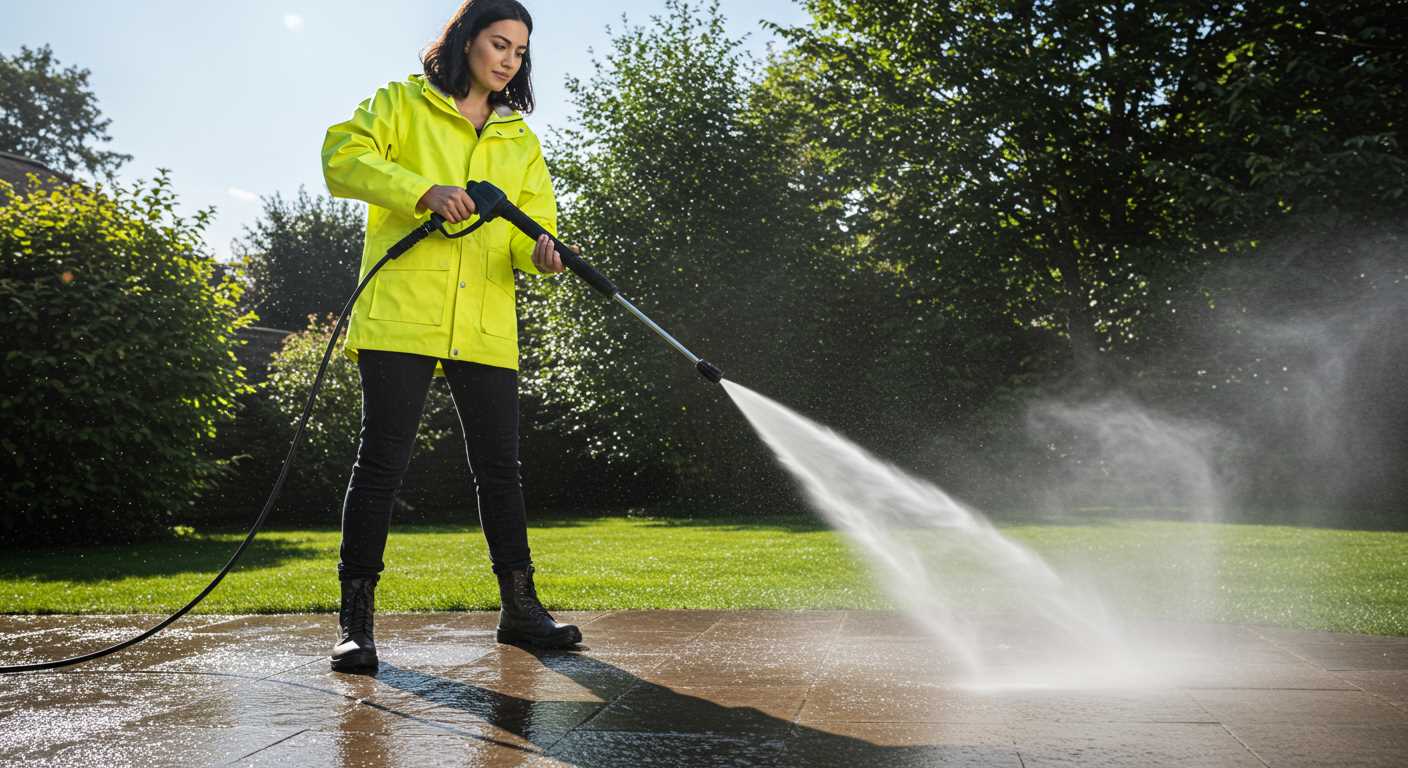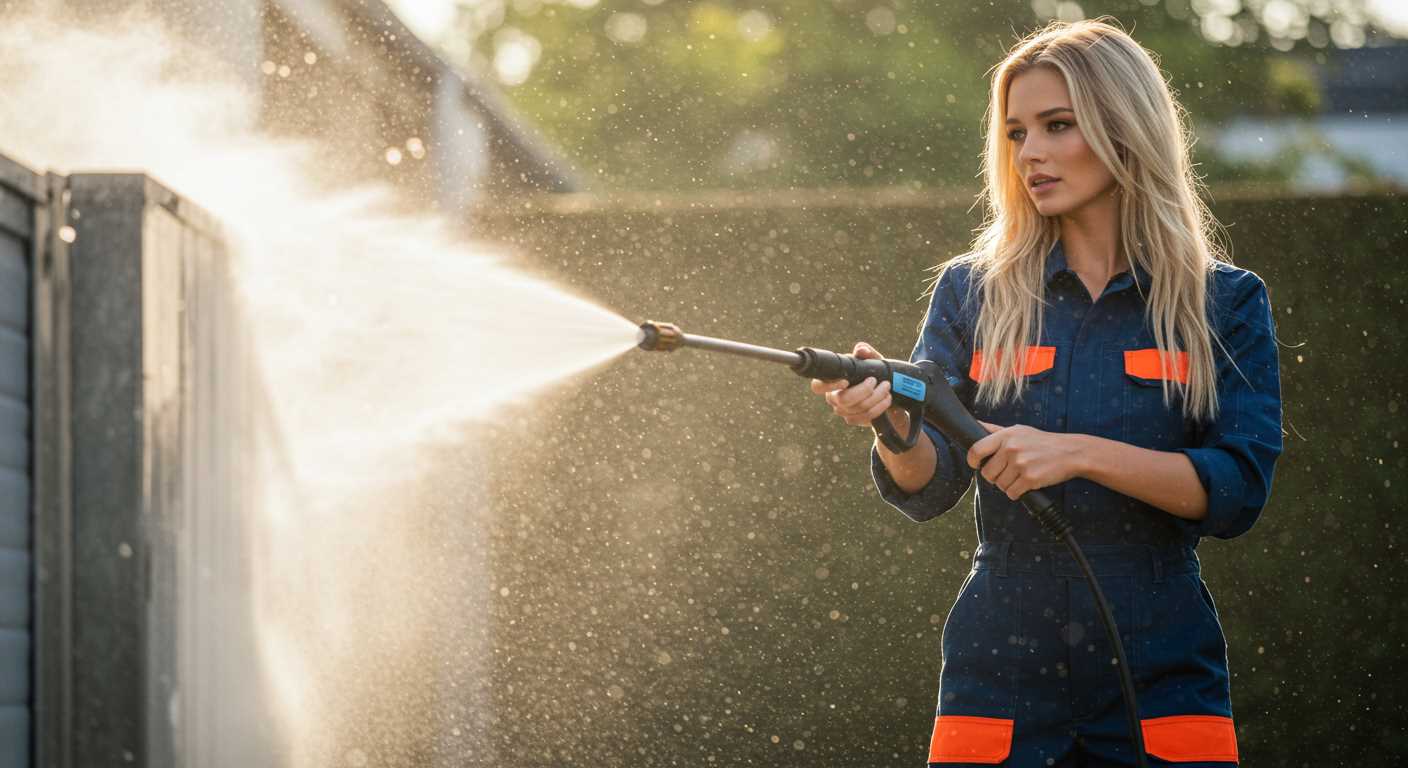Checking the water supply is my first recommendation. Ensure that the inlet is providing a consistent flow and that there are no blockages in the hose or connectors. A clear pathway is essential for maintaining steady pressure during use.
Next, inspect the filter located at the water inlet. Over time, debris can accumulate, causing performance issues. Clean or replace this component as needed to ensure optimal functioning.
Examine the nozzle for clogs. A blocked nozzle can drastically affect the flow rate, leading to those bothersome fluctuations. Use a fine wire or a dedicated cleaning kit to remove any blockages, ensuring that the spray pattern is uniform.
Check the pump’s operation. If the motor sounds irregular or if there are vibrations, there could be an internal issue requiring attention. Look for leaks or wear on the seals, as these can disrupt proper water flow and pressure levels.
Finally, verify the oil level in the pump, if applicable. Low oil can lead to overheating and malfunction. Keep it topped up according to the manufacturer’s specifications to ensure longevity and reliable performance.
Addressing the Issue of Inconsistent Water Flow
I recommend examining the inlet filter and hose for blockages. Debris can accumulate, restricting water intake, leading to irregular pressure output. Detach the hose and inspect both components. Clean any dirt or obstructions you find. If the inlet filter appears damaged, replacing it will improve performance.
Next, inspect the nozzle. A clogged or worn nozzle alters water flow and pressure. Ensure that it is free of dirt and debris. If cleaning doesn’t restore function, consider replacing the nozzle with one of similar specifications to maintain optimal performance.
Check the pump’s functionality. Look for leaks or signs of wear. If you notice any issues, replacing seals or gaskets might be necessary. Keeping these components in good condition is crucial for consistent water delivery.
Another aspect to assess is the engine’s power. Ensure it is running adequately, as insufficient power can disrupt water flow. If the engine struggles, cleaning the air filter might alleviate the problem. In cases of persistent issues, seeking a professional inspection could be beneficial.
Don’t overlook the pressure settings. Adjusting them according to your specific cleaning tasks can make a significant difference. Misconfigured settings often lead to excess fluctuations in water output. Following the manufacturer’s guidelines will help you find the right balance.
Regular maintenance is key. Establish a routine to clean and inspect all components routinely. This proactive approach prevents issues before they escalate, guaranteeing reliable performance over time.
Identify the Symptoms of a Surging Cleaning Machine
I’ve encountered various indicators that signal an issue with the operation of a cleaning device. Recognising these symptoms early can save time and effort down the line. Here’s what to look for:
- Inconsistent Water Flow: If the flow appears irregular or fluctuates, it may suggest a problem with the water intake or pump.
- Pressure Fluctuation: This manifests as a noticeable increase and decrease in force while using the device, usually accompanied by audible changes in the motor sound.
- Unusual Engine Response: The engine may seem to race or stall intermittently, indicating potential fuel or air supply issues.
- Leakage: Any signs of leaks, especially around fittings and the pump, could contribute to erratic performance.
- Unusual Noises: Sounds that deviate from the typical operation, such as sputtering or high-pitched whining, can point to mechanical issues.
Common Causes to Investigate
Understanding these symptoms leads to effective diagnosis. Factors that often contribute include:
- Poor fuel quality or incorrect fuel type.
- Blocked water filters or spray nozzles.
- Air leaks in the intake system.
- Worn or damaged pump components.
Recognising these signs and knowing where to look can significantly aid in addressing performance issues. Being observant of the machine’s behaviour ensures maintenance is timely and efficient.
Check and Clean the Water Inlet Filter

Inspecting and cleaning the water inlet filter is a straightforward yet crucial step to maintain optimal performance. Begin by locating the inlet filter, typically found at the water intake point of your machine.
Steps to Clean the Inlet Filter
1. Turn off the machine and disconnect it from the water supply. This ensures safety while working on the device.
2. Remove the water hose and locate the filter cover. It may require a slight twist or unscrewing, depending on the design.
3. Carefully pull out the filter. Inspect it for accumulated debris, dirt, or any signs of blockage.
4. Rinse the filter under running water. If necessary, use a soft brush to gently remove any stubborn grime.
5. After cleaning, allow the filter to dry completely before reinserting it back into its housing.
6. Reattach the cover securely and reconnect the water supply before testing the machine.
Maintenance Tips
To prolong the life of the filter, consider the following:
| Tip | Description |
|---|---|
| Regular Inspection | Check the filter monthly for dirt buildup, especially after extensive use. |
| Pre-Filtration | Using a separate pre-filter can help minimise debris entering the machine. |
| Water Quality | Ensure you’re using clean water without large particles to reduce filter wear. |
Keeping the inlet filter clean not only enhances performance but also extends the lifespan of your machine. Regular maintenance ensures you can tackle cleaning tasks with confidence and efficiency.
Inspect the High-Pressure Hose for Kinks or Damage

Examine the high-pressure hose thoroughly for any signs of kinks or abrasions. A twisted or damaged hose can restrict the flow of water, leading to fluctuating pressure during operation. Position the hose in a straight line and check for any sharp bends. If you spot a kink, trying to straighten it out can temporarily help, but replacement may be necessary for optimal performance.
Inspect the exterior for wear and tear, such as cracks or fraying, as these can compromise the hose’s integrity. Damage may cause leaks or reduce the pressure. If any imperfections appear significant, I recommend replacing the hose immediately to ensure a consistent and reliable water flow.
Additionally, look at the connection points where the hose attaches to the machine. Ensure these fittings are secure and leak-free. Tightening any loose connections can often resolve issues linked to inconsistent water output.
Regularly checking the high-pressure hose is a simple yet effective way to maintain your equipment’s performance. Keeping it in good condition can help avoid a host of issues down the line, enhancing the overall cleaning experience.
Examine the Spray Gun and Nozzles for Blockages

Inspect the spray gun and nozzles carefully. A blockage hinders water flow and can result in inconsistent performance. Begin by detaching the spray gun from the hose and laying it on a flat surface.
Check the Spray Gun
- Look for any visible debris in the inlet and outlet openings.
- Inspect the trigger mechanism for any signs of sticking or jammed components.
- Ensure the gasket is in good condition to maintain a proper seal.
Inspect the Nozzles
Next, focus on the nozzles. These components are crucial for controlling the water flow and pressure. Follow these steps:
- Remove each nozzle and visually examine for clogs. Use a small, soft brush to clean out any obstructions.
- Soak nozzles in a mixture of vinegar and water for a few hours to dissolve mineral buildup.
- Rinse thoroughly with clean water and ensure all openings are clear.
After cleaning, reattach the spray gun and nozzles, and test the setup. If problems persist, further investigation may be required. Knowing that these components are often overlooked, maintenance can significantly improve performance. Regular cleaning can save time and frustration in the long run.
Verify the fuel and oil levels in the motor
Inspect the fuel tank for adequate petrol. Insufficient fuel can lead to inconsistent operation. If the level is low, fill it with fresh fuel that complies with the manufacturer’s recommendations.
Next, check the oil level by examining the dipstick or fill tube. The oil should sit within the proper range marked on the dipstick. If it’s below the recommended level, add high-quality oil that meets the specifications outlined in the user manual. Regular maintenance of oil levels not only aids in performance but also prolongs the life of the engine.
Steps to Verify Fuel and Oil Levels
1. Turn off the engine and allow it to cool before checking fuel and oil.
2. Remove the fuel cap, assess the fuel level, and refill as necessary.
3. Check the oil level using the dipstick–wipe it clean, reinsert, and check again. Fill if needed.
Additional Tips
Be mindful of the fuel age, as old fuel can cause starting issues. If the petrol has been in the tank for more than 30 days, consider draining it and replacing it with fresh fuel. Keeping the oil clean and at optimal levels is instrumental in ensuring smooth engine function.
Adjust the Unloader Valve Settings Properly

Set the unloader valve to the manufacturer’s specified pressure rating. This prevents fluctuations in output and ensures consistent performance. Start by locating the unloader valve, typically situated near the pump or at the exit of the pressure line. Use a wrench to turn the adjustment screw clockwise to increase pressure or counterclockwise to decrease it.
Calibrating the Pressure
With the machine running, observe the pressure gauge while making incremental adjustments. Aim for the recommended operating pressure stated in your user manual. If there’s no gauge, listen for irregular sounds from the motor, which can signal improper settings. Fine-tune until you achieve a smooth operation.
Testing After Adjustment
After adjustments, conduct a test run. Check for consistent spray and listen closely for any unusual surging noises. If irregularities persist, recheck the setting and ensure no other components are obstructed. Regular calibration of the unloader valve can enhance reliability and prolong the life of your equipment.
Consult the manufacturer’s manual for troubleshooting tips
For specific guidance on resolving issues, always refer to the product manual provided by the manufacturer. This document contains tailored solutions and protocols that are unique to your model. Look for troubleshooting sections which often outline common problems along with step-by-step instructions to remedy them.
Pay attention to the diagrams and specifications regarding parts and maintenance. If you encounter persistent difficulties, the manual might also suggest contacting customer support or certified repair services for further assistance.
Ensure you understand the recommended maintenance schedule as outlined in the manual. Regular upkeep can prevent many issues before they occur. Following these guidelines will enhance the longevity and performance of your unit.







